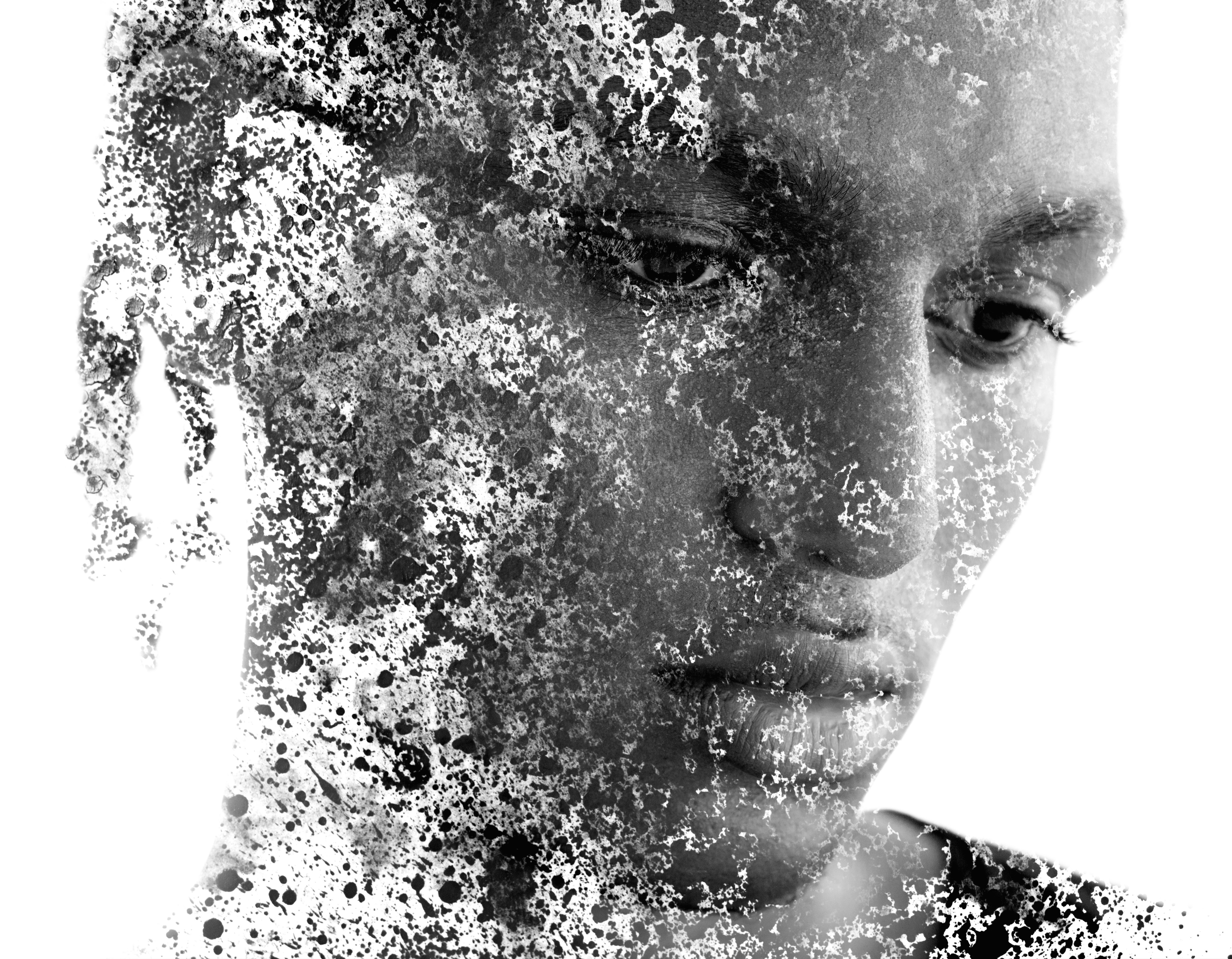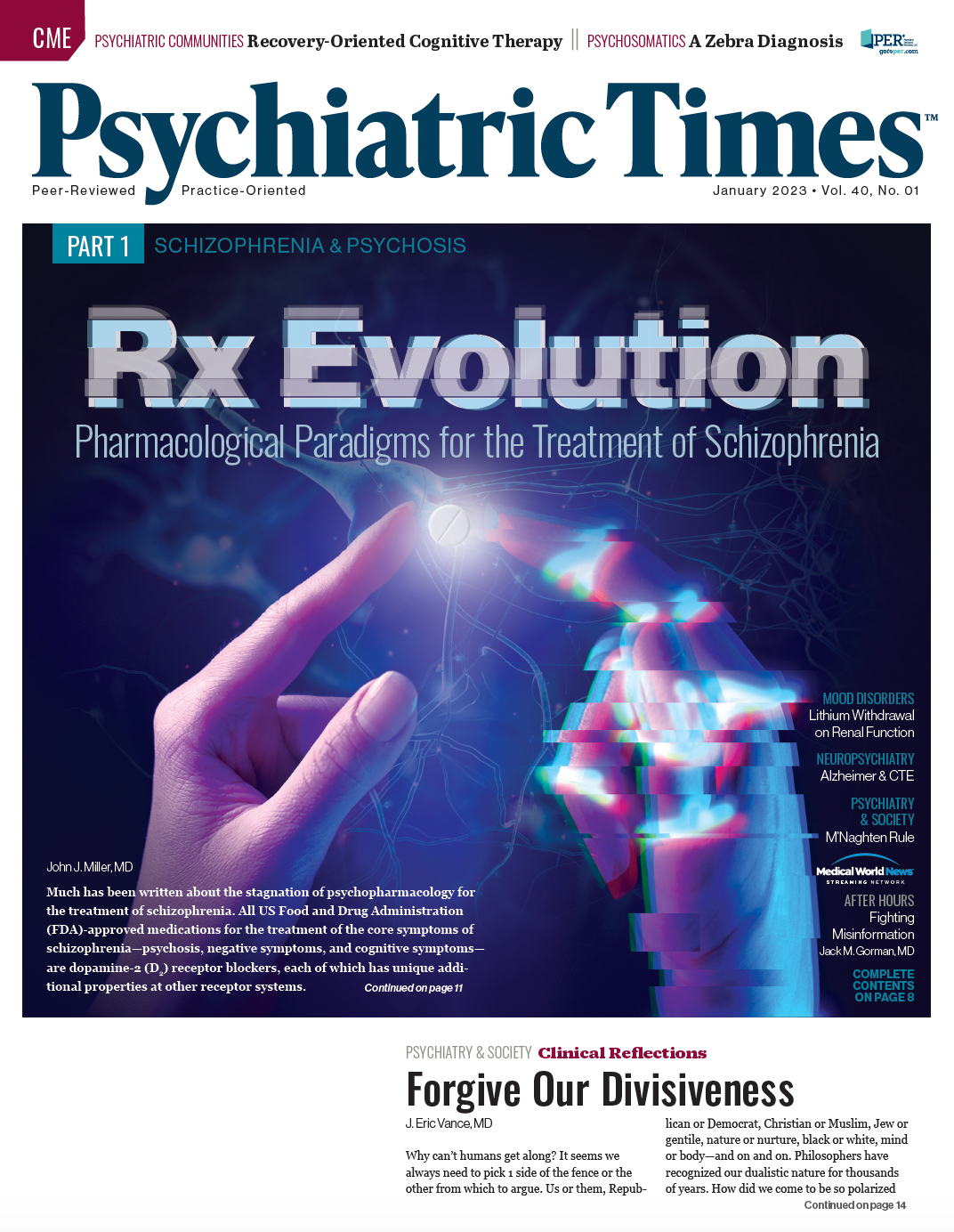Publication
Article
Psychiatric Times
Lessons From a Decades-Old Case of Zebra Diagnosis in an African American Veteran
Author(s):
Psychiatrists are physicians first...
LUMEZIA.com/AdobeStock

Sometimes we say that “the more things change, the more they stay the same.” Sometimes we also say that “times change” and leave it at that. Which old adage is more accurate?
This question is not included in the proverb part of the mental status exam. However, answering it can help us compare our contemporary concerns with lessons learned from a nearly 50-year-old clinical case involving an African American veteran.
As I write, we are nearing the year 2023, but the event occurred in 1973, half a century earlier. Because that sounds like a very long time ago—chronologically at least —the clinical case may be more suited to a history of medicine journal than one with up-to-date topics, except for the fact that same situation could conceivably occur today. (Albeit with different players at a different location and perhaps with a different diagnosis.)
Presumably, we are familiar with current concerns with race-based medical divides, but what was happening in 1973, both in the wider world and in my narrow medical school world? Let us turn back time.
In 1973, “Bad, Bad Leroy Brown” topped the charts. In 1973, the Vietnam War had just ended. It was America’s longest war and America’s most disputed war. Soldiers were returning home, often to an unwelcoming world. Films like Super Fly and Shaft graced (or disgraced) the big screen, while The Godfather (1972) won the Academy Award. Richard Nixon was still in the White House, not yet impeached but sorely stained by the Watergate scandal. The Yom Kippur War began and ended in October 1973, with Israel the victor and Golda Meir still prime minister. Jim Croce, who brought us “Leroy Brown,” died in a plane crash, also in October.
Then there was me, entering my last year of medical school and in need of an externship and some extra money, and ideally an externship that offered extra learning. I applied to the human resources (HR) department at the US Department of Veterans Affairs (VA), having heard that there were part-time positions. When the man at the HR desk asked me if I could type, even after he heard that I was a fourth-year medical student, I secretly fumed but took it in stride—few sued for gender discrimination in 1973, when gender (as well as race) stereotypes were still commonplace, even in major metropolitan areas of America.
As luck would have it, someone more important than the HR representative was standing in the same anteroom. That someone was the chair of the VA Psychiatry Department, who intervened and asked me about my interest in an externship that he was about to advertise.
A position for a medical student had just opened at a brand-new methadone program at Chicago’s West Side VA, he said. Methadone was big news back then, having been approved in 1971, but the addiction antidote faced severe legal restrictions by 1973. The psychiatry chair explained that he had just won a large grant to pilot a methadone program for vets—not just Vietnam vets, but all vets. Of course, Vietnam vets garnered the most attention for many reasons, not only because anti-war protests made virtually everyone aware of the controversial war, but also because of alarming reports of heroin addictions acquired in the jungle.
The concept of methadone treatment was intriguing. Was drug addiction biological, sociological, psychological, or even political? Who knew back then? (And who knows for sure even now?) Genetics as we know it was not on the radar in 1973, although race-based theories about addiction abounded. The VA position sounded like an ideal learning experience, even if the program functioned more like the Wild West than a structured medical school clerkship.
The fact that politics made its mark on this new approach added to the appeal. Political opposition to methadone was strong in 1973, far stronger than opposition to buprenorphine today. On the other side of the spectrum, the Black Panther Party accused politicos of ignoring heroin distribution in Black neighborhoods intentionally (as they alleged), in an attempt to retain control over Black citizens rendered placid by poppy by-products. Black Panthers also ran free clinics and screened for sickle cell anemia. Their edgy opinions were impossible to ignore when working on the West Side of Chicago, especially as group therapy discussions often alluded to popular Black Panther pronouncements.
I was assigned to perform physical exams on prospective patients during their enrollment. It was an interesting experience; I learned to identify flat affect by listening to a patient speak in monotone as he described the joyous experience of his firstborn’s birth. A more animated heroin-addicted vet spoke in singsong, rhyming each sentence and spitting out words like bullets. The department chair explained that these patients were self-medicating their symptoms with the psychoactive agent that was most readily available to them at the time: heroin.
Most potential patients were young and had recently returned from Vietnam, where up to 25% of service men developed dependencies on opium.1 All our veterans were men, and all patients in the program were African American. A few stragglers were left from earlier wars.
One man, let us call him “Henry,” was so “old” that he had flown in unpressurized planes. The younger men on the unit appreciated his old-time airplane stories––but no one enjoyed hearing him scream for more methadone.
Henry did not just scream for more medication, he literally rolled on the floor, ranting and raving and demanding higher doses. Seasoned addictions counselors paid no attention to his gyrations and verbalizations. They wrote off his histrionics to addictive behavior. Younger psychologists explained his actions in more psychodynamic terms, pointing out that he was “dependent on drugs” and was now “acting like a baby,” and thereby demonstrating more of his “oral-dependent” personality. That answer made sense on the surface, until more data surfaced.
When I performed Henry’s physical, he complained loudly about episodic pain in his legs, even though he had no visible injuries or trauma history. His lab results were normal save for his sickle cell trait (SA). Yet he was not anemic. At the time, SA was not deemed dangerous, although some academicians were reconsidering this “received wisdom.” Still, Henry’s condition seemed far removed from the seriously ill children with sickle cell disease whom I encountered on the pediatric wards of the nearby county hospital.
To appease Henry, and to confirm my concern with his “chief complaint,” I requested an orthopedic consult to examine his legs. The orthopedic department in turn requested x-rays, as per protocol. When I returned to the ward, a team of young orthopedists were gasping at x-rays mounted on a make-do light box. The chief resident proudly pointed out infarctions in Henry’s long bones, exactly where he complained of pain. The infarctions reminded him of infarctions in patients with sickle cell anemia.
We double-checked Henry’s labs and confirmed the presence of sickle cell trait, and nothing but. When we reviewed his military history, we realized that the hypoxia from unpressurized planes could induce such symptoms in individuals who carried the trait. We have learned much more about SA since 1973, but a literature search revealed reports of splenic infarctions in Korean War veterans with SA as far back as 1954.2
I perused the available journal articles. The name of one prolific author stood out: Fred Rosner, MD, a hematologist, academician, and medical ethicist who had recently published a letter on SA in the New England Journal of Medicine (1972). Rosner’s name was well known in other circles because of his publications on medicine in Jewish law (1972). This case was a prime example for both hematology and medical ethics—and for the history of medicine, given that this “zebra diagnosis” might not have been made earlier in time.
I felt sick at the thought that Henry had suffered so long—and not just physically, but morally as well. He was ostracized and stigmatized, unaware that his opiate use was a response—partially, if not fully—to untreated pain, which was dismissed as psychological. Now he was in a methadone program and receiving methadone, but just not enough. Ironically, many pain specialists use that treatment for pain today.
Medical journals debated the risks of sickle traits in those years3,4 (and they continue to do so to this day). The US Navy had begun screening candidates only a year before,5 but it is likely that the plight of similar soldiers flew beneath the radar for years. It seems that records were reopened as more data about high altitudes and unpressurized planes accrued, and as some sudden mysterious deaths in military recruits were later linked to SA. Preinduction screening eventually became standard in all military branches.6,7
Upon reflection, I would think that this veteran deserved reparations for a service-related injury, rather than the reprimands he received. I wonder if a pain syndrome from a medical condition that was more prevalent in nonminority ethnic or racial groups would have been accorded attention from the start. That question is being asked again in other venues today.
Discussion
Henry’s case opened many questions, both for Henry and society. It answered 1 question for me: It reaffirmed the value of studying medicine before practicing psychiatry or psychopharmacology. It was bad enough that the source of Henry’s suffering went unidentified for so long. What if we had parroted the psychodynamic explanations for his crying bouts without looking further?
Prescribing methadone for Henry’s addiction without tracking the source of his pain might have dampened his drug seeking, but identifying its medical origin gave him an opportunity to change his self-image, as well as his behavior, and to change the way that society saw him. Luckily, psychiatrists are physicians first.
Dr Packer is an assistant clinical professor of psychiatry and behavioral sciences at Icahn School of Medicine at Mount Sinai in New York, New York.
Note: An earlier version of this article was published in Psychiatric Times™, May 15, 2015.
References
1. Shuster AM. G.I. heroin addiction epidemic in Vietnam. The New York Times. May 16, 1971. Accessed May 14, 2005. https://www.nytimes.com/1971/05/16/archives/gi-heroin-addiction-epidemic-in-vietnam-gi-heroin-addiction-is.html
2. Kark JA, Posey DM, Schumacher HR, Ruehle CJ. Sickle-cell trait as a risk factor for sudden death in physical training. N Engl J Med. 1987;317(13):781-787.
3. Kellon DB, Beutler E. Physician attitudes about sickle cell disease and sickle cell trait. JAMA. 1974;227(1):71-72.
4. The not so harmless sickle trait. Letter. N Engl J Med. 1972;286(7):377-378.
5. McGrew CJ Jr. Sickle cell trait in the white population. JAMA. 1973;224(13):1762-1763.
6. Lowbeer L. Complications of sickle cell trait. JAMA. 1983;250(3):360-361.
7. Sullivan LW. The risks of sickle-cell trait: caution and common sense. N Engl J Med. 1987;317(13):830-831.







